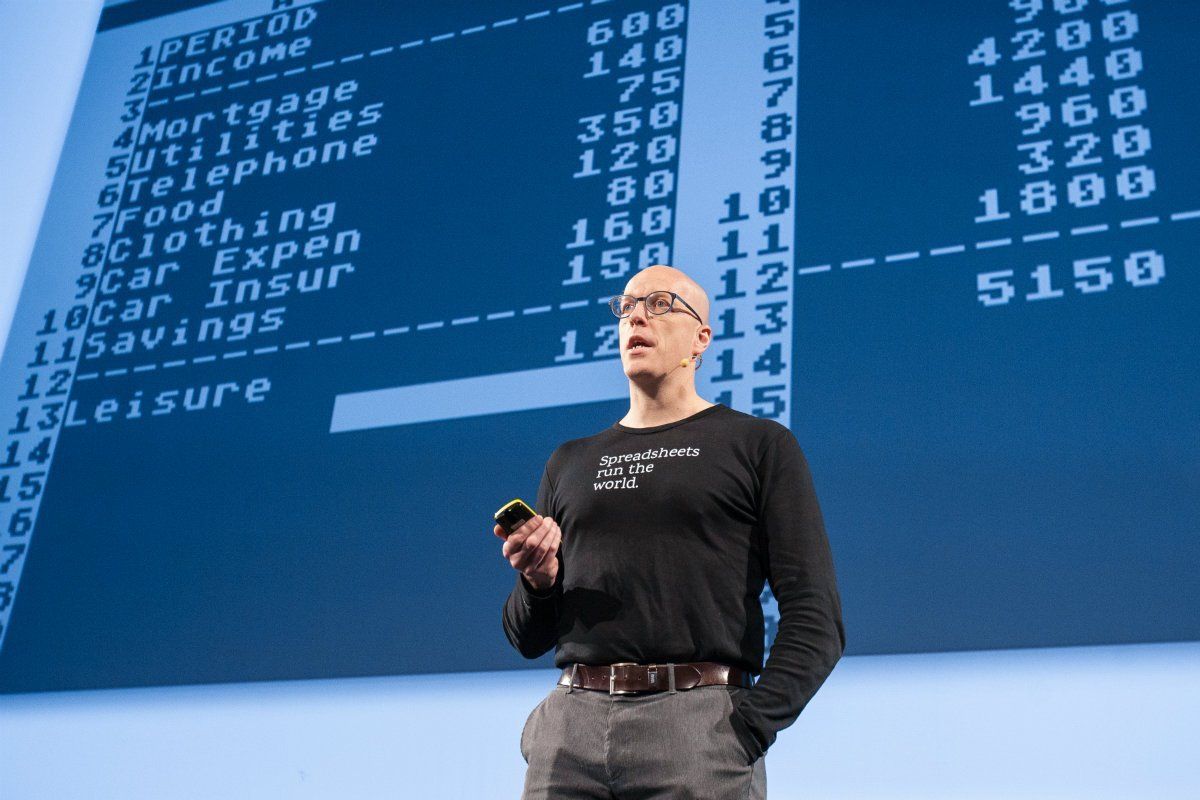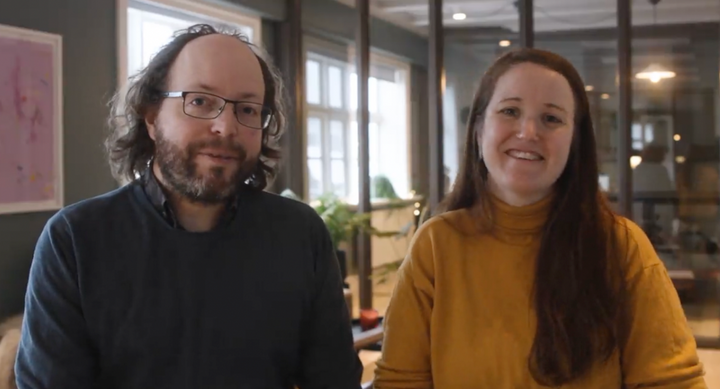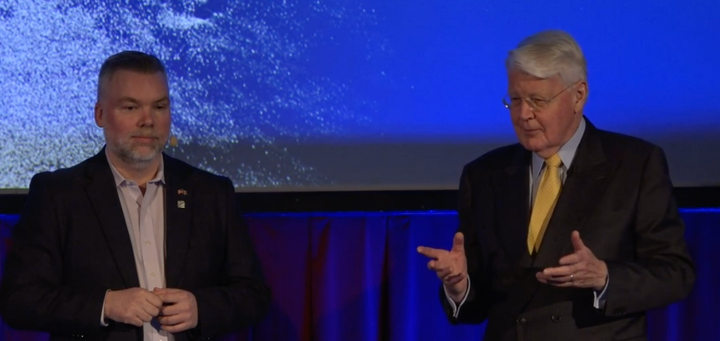"The worst funds are those that keep you hanging on and are always lukewarm"

Earlier this year, GRID raised a $12 million investment from NEA. The company founded by Hjálmar Gíslason began its funding process in the middle of the first wave of the Covid-19 pandemic and the funding round is the largest raised by an Icelandic startup pre-revenue. When the pandemic hit, the company was in a position to continue operating unchanged for another eighteen months, as interest from investors was high when it was founded.
“We started out pretty strongly with $1 million from angel investors a month after the company was founded,” says Hjálmar when we meet one rainy day at the company headquarters, at Höfðatorg in Reykjavík. These investments were made in 2018. “And then quite a lot of people were interested in what we were doing, so we received more VC investment earlier than we intended.”
In addition to the first million, another $3.5 million was added shortly to the company coffers. “We used it to build a team and launch a closed beta version of our product at the end of last year. We began 2020 with twelve or thirteen employees and were confident that we would get further financing.” Hjálmar says that at this point GRID had capital to continue operating at the same scale for eighteen months. “We were in a great position – having shown that we had a product that had a place on the market and building towards a series A round of financing.”
US lockdown days before departure
In February and March, Hjálmar and his colleagues began to take the temperature of investors and finalising the pitch. “I had a trip to San Francisco booked for the last week in March and had lined up ten meetings with investors. But the weekend before I was supposed to leave, they went into lockdown,” says Hjálmar, referring to the US president’s travel ban. “Within two days of the weekend, almost everyone I was supposed to meet had moved the meetings to Zoom, even though I was supposed to be in the city.”
Hjálmar’s assessment was that since he was going to meet all the investors on Zoom anyway, he might as well be at home rather than in a San Francisco hotel room. “I just adopted California time at the office and all except one of the meetings stood. After this week and the next, we decided that we needed to anticipate more possible outcomes. We had to prepare for things to get difficult.”
Hjálmar says that at this point he had been in contact with 50 or 60 investment funds. “So these funds were in the pipeline to begin with. In the months after March another 50 joined them. So there were 110 funds on my list. Of those, I spoke with around 70–80 in person, by that I mean at least a 30-minute phone call, not just email exchanges.”
He says this part of the startup world is basically sales. “Like a lot of other things, this is about selling. At this point you have funds that are in the early stages of considering a purchase. Then you work your way out from there.”
Don’t chase down every lead
Hjálmar says the lesson from this process is, first and foremost, that he continued to talk with too many investors for too long. “There were some conversations going on that I knew would lead nowhere. I have a list of questions that I always try to have answers to after the first conversation:
- At what stage do you usually invest?
- How much money do you typically invest?
- Do you usually lead the investment or participate with others leading?
- In what area do you invest?
- In what part of the world do you invest?
“Then I have much more open questions: How do you make investment decisions? I do that to understand the process ahead and also to understand who I am talking with. Am I talking with people who make decisions? Am I talking with someone who is just feeling us out? What needs to happen next?”
Hjálmar says that after this process he has realised that the best venture capital funds are very clear about how they see things and open about it in their talks with the companies they deal with. They are quick to say no or ask for more information in order to decide what happens next.
“The worst funds are those that keep you hanging on and are always lukewarm. The golden rule is that if there is not clearly a strong interest within the company after the first conversation with an owner of the company, then probably nothing is going to happen. If you have roughly the same conversation with many people in the fund, or more and more conversations with the same people without some movement within the company, then it’s going nowhere. I regret not having stopped some of the conversations earlier.”
Important to cast a wide net but prioritise the focus
He says that another characteristic of this process was that the VC funds that took the process a long way and did it quickly, are the funds that people in the business have heard of. “If you were to make a list of the top fifteen funds in the US, then we had in-depth conversations that went some distance with at least five of them. There were people there that got it, were ready to bet on us and had already considered the market and the possibilities of such a company. Many of them were very quick to go into it in depth and then say no.”
“At the same time we were looking if we had a chance of financing other than series A funding, for example taking in less money and then just concentrating on Icelandic investors, or even some intermediate step.”
“Then at the start of May I had my first talk with NEA,” – the fund that in the end was the lead investor in this financing round. “It happened very fast and we were soon introduced to Forest Baskett, who is a partner at NEA. Among other things, he was one of the first investors in Tableau seventeen years ago and so knew the market for products such as GRID very well. Things happened incredibly fast after that.”
The process from presentation to term sheet took a total of six weeks. During that time, according to Hjálmar, they had between twelve and fifteen conversations with the fund. What characterised the process, however, was that in all the conversations there was very clear progress. The summer was spent on paperwork.
“If I can proffer any wisdom from this, it would mainly be to see the process as a sales process. You have to cast a wide net but also put energy into those who are likely to ‘buy‘, and then keep driving towards a conclusion. No matter if the conclusion is yes or no, because getting a clear no is so much more important that not getting it.”
Is that something that people in their first financing process can allow themselves – to not chase investors who are only moderately interested? Would this approach have been useful for you when you were starting out, before becoming as recognised as you are now in this world?
“What I would have liked to have known earlier in the process is that to get such an investment you need to maybe talk to over a hundred funds. It is important to have many open options and not spend your entire time chasing one fund. When I was younger, you thought you were doing well being in contact with maybe three funds. There is a lesson to be learned there.”
NEA wasn’t targeted at the start
“Another thing is that it is not difficult to work your way through this world,” says Hjálmar. “If you have something to offer then there are so many possibilities. It is best of course to have a warm intro in, and I will totally admit that of the first 50 or 60 funds that we talked with, I knew most of them. That is very valuable. But note that the fund which we closed with is not one that I knew beforehand but got to know in the process. So, it is good to get someone to introduce you, but it is totally possible to cold contact and get an initial conversation with a fund if you are in an exciting market with an exciting concept and team. Funds pick up on that. And there is nothing to lose by trying.”
Covid reduced the need to be in Silicon Valley
Hjálmar says that the impact of Covid-19 became obvious during the process. Financing went through without him ever meeting in person any representatives of the funds they were talking to, with the exception of the Icelandic ones. The funds had also changed their procedures.
“You could totally sense that the funds were feeling their way forwards. They made, I think, many more background checks. They called a lot of people that had worked with us and asked all sorts of things. Both people that we had directed them to but also I know the funds spoke with people that we had not directed them to. Some funds also wanted to have a relaxed meeting with us and said: ‛Hey, let’s have dinner together. You in your office and us in ours.ʼ It never came to that, but we chatted over coffee in a larger group where we were not supposed to discuss anything business related, just try to get to know one another.” So the funds were feeling their way forward in this situation, just as much as the companies that approached them.
“What happened too with Covid was that it didn’t matter if the funds were talking to a company in the next building in Silicon Valley or someone on a different continent. You could see that it sped up the progress that was being made. It didn’t matter at all where people were. In the last five years the necessity of being in Silicon Valley in order to get financing from there has decreased. In the last six months it has changed even more. Of course it is still a bit strange to be from Iceland. I remember a phone call where they actually said: “That Iceland thing is a little bit weird,” but it wasn’t unworkable. People had never spoken to anyone from Iceland and just knew that here there were polar bears and igloos – which of course is not correct,” says Hjálmar and laughs.
Luck comes in many forms
Hjálmar emphasises the value of getting a quick response from funds, whether they are interested or not. One fund that did not want to invest in GRID did the company a huge favour.
“A few funds that we went quite far with backed out after a while but gave themselves time to do it over the telephone and explained clearly why they did not want to take part this time, what they liked, what was missing in their opinion and under what circumstances we could turn to them again. These phone calls came almost without exception from the big funds, and women were much more likely to have this final conversation than the men.”
For someone who doesn’t work in the startup world, it is interesting to hear about this culture, because it indicates that the funds are interested in helping everyone to do better. Is there anything in that?
“Yes, absolutely. The best example of this is a fund that said no to us, introduced us shortly afterwards to NEA. For this fund that said no, we were just too early in the product development process to suit them as an investment, but they pointed out to us that NEA would probably be interested. Then there was something else that was crazy interesting. When we were getting close to issuing a term sheet, some conversations were still going on with this and that fund. It was fun to see that when the funds had been convinced, they sold themselves hard. We got amazing sales pitches about why we should work with this one or that because they were the right choice for us. Usually this is the other way around and the balance of power is such that the investor has almost all the power. This switches round once they have realised they want to work with us. Then they turn to landing an agreement, and it was super fun to experience that.”




